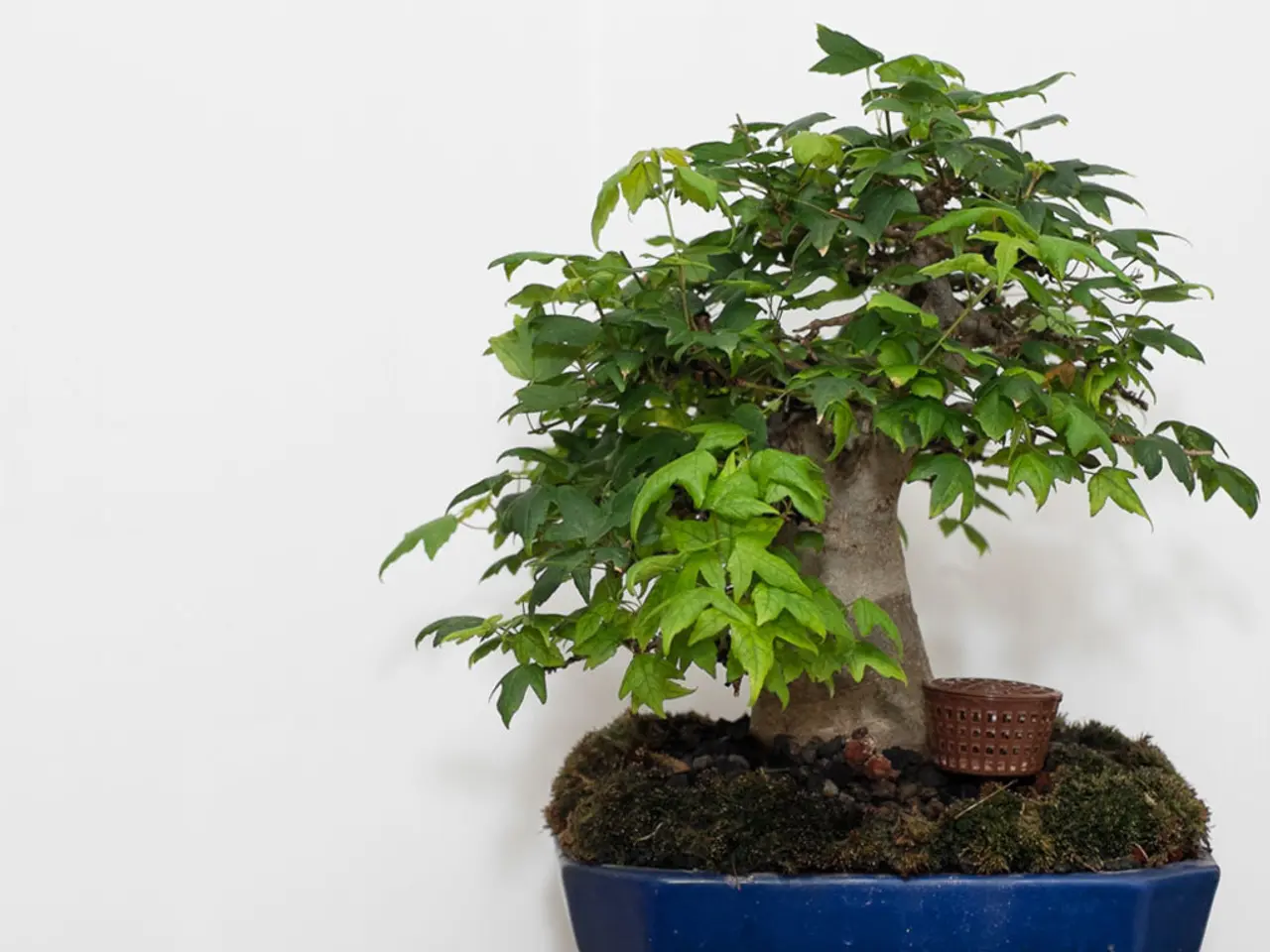Essential Bonsai Knowledge: Grasping the Crucial Demands of Your Plant
Bonsai trees, miniature versions of full-sized plants, have captivated garden enthusiasts for centuries. To help your bonsai thrive, it's essential to understand the key elements of its care: lighting, watering, temperature, humidity, soil, pruning, and additional care.
Lighting
Provide your bonsai with adequate light tailored to its species. Most bonsai need at least 4-6 hours of direct sunlight daily if outdoors, while indoor bonsai may require bright, indirect light or supplemental grow lights to ensure enough exposure.
Watering
Water only when the top layer of soil feels dry to the touch. Avoid watering on a strict schedule; instead, check soil moisture regularly. Water thoroughly until excess drains out, but never let the bonsai sit in standing water. In summer or dry conditions, soil may need daily checks, while in cooler or humid times, watering every few days might suffice.
Temperature
Maintain moderate, stable temperatures. Avoid drastic fluctuations, extreme heat, or frost. For example, American Sweetgum bonsai prefer moderate temperatures and should be protected from extremes.
Humidity
Bonsai, especially indoors, benefit from higher humidity. You can increase humidity by placing the bonsai on a humidity tray with water and pebbles or misting the foliage regularly to emulate their natural environment.
Soil
Use well-draining bonsai-specific soil mixes rather than regular garden soil. A good mix includes akadama (clay), pumice, and lava rock to allow water to drain efficiently and oxygenate roots. A small amount of organic matter like pine bark or compost can aid nutrition.
Pruning
Regularly trim new growth to maintain the desired shape and size. Pruning promotes healthy growth and shapes the bonsai aesthetically — for example, pruning into a ball shape is a common technique.
Additional Care
Fertilize during the growing season with a balanced fertilizer, monitor for pests and diseases (like spider mites or root rot), and repot every 1-3 years to refresh soil and prune roots as necessary.
Grouping Plants Together
Grouping plants together can also increase the surrounding humidity, which benefits your bonsai.
Creating a New Bonsai
To create a new bonsai from an existing one, gently take semi-hardwood cuttings, remove lower leaves, and plant them in well-draining soil.
Identifying Root Bound
Identifying root bound in a bonsai tree is vital for its health. Signs include slowed growth, yellowing leaves, and water draining quickly through the pot.
Repotting Frequency
Repotting frequency depends on species, age, and growth rate; generally, bonsai trees require repotting every 2-5 years.
Maintaining Ideal Humidity
Maintaining ideal humidity guarantees the tree's roots, stems, and leaves function efficiently, promoting healthy growth and development. Inadequate humidity can lead to water stress, causing leaves to turn yellow, wilt, or drop.
Avoiding Over-Humidification
Be cautious not to over-humidify, as this can lead to root rot and other issues.
These combined steps form a holistic approach to bonsai care, creating an environment that supports the tree’s health and beauty through attentive, species-specific care.
A relevant lifestyle hobby incorporating gardening and home-and-garden elements is bonsai care, which includes techniques such as maintaining ideal humidity, pruning, and using bonsai-specific soil mixes to nurture miniature plants. Additionally, grouping plants together and creating new bonsai from existing ones are practices that further enhance the devotee's home-and-garden lifestyle.




